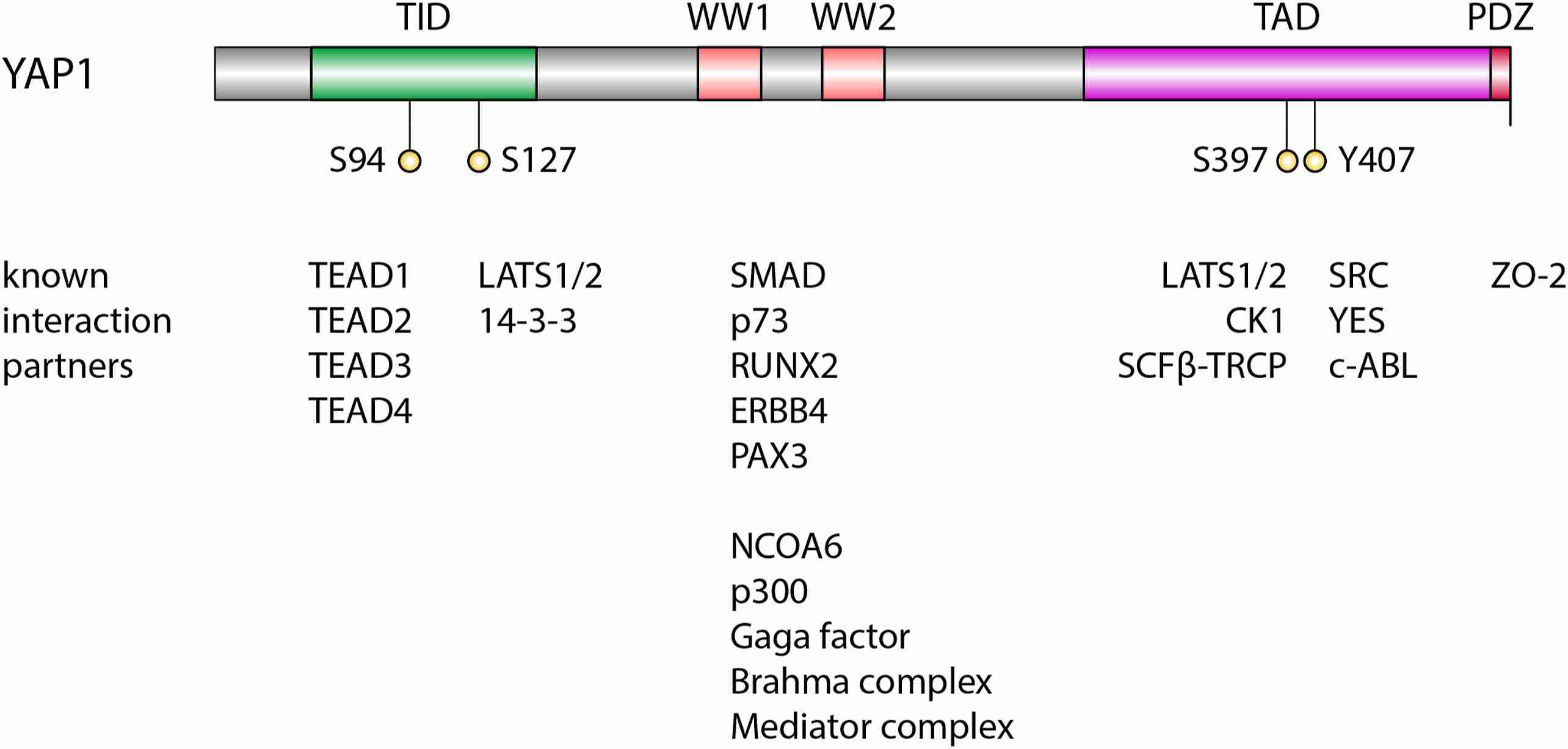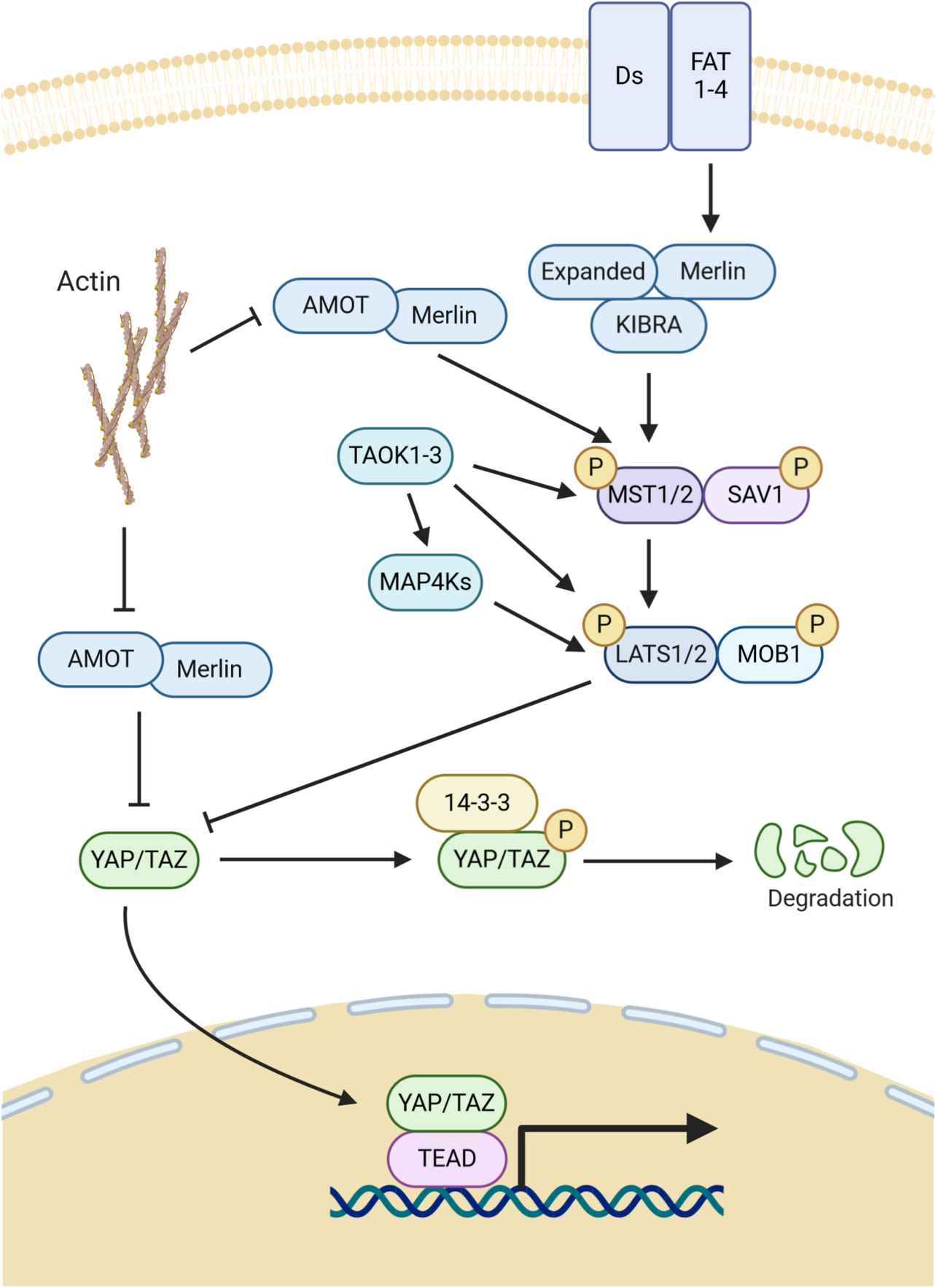What is YAP1 Protein
The YAP1 protein stands out as a key player in cellular regulation, orchestrating various processes crucial for maintaining homeostasis.
What is YAP1 Protein?
The Yes-associated protein 1 (YAP1) stands as a pivotal player in cellular regulation, its significance deeply embedded in the intricate web of molecular biology. Structurally, YAP1 boasts a distinctive configuration featuring a WW domain for interaction with proline-rich motifs and a PDZ-binding motif crucial for intricate protein-protein interactions.

Figure 1. Overview YAP1 protein domains and interaction partners. (Szulzewsky, F., et al. 2021)
The Function of YAP1 Protein
YAP1's functionality extends beyond its structural intricacies, making it a versatile transcriptional co-activator. Its primary role lies in the nucleus, where it engages with transcription factors, particularly TEAD, to modulate gene expression. This orchestration encompasses a spectrum of cellular processes, including cell proliferation, survival, and differentiation.
Furthermore, YAP1's involvement in tissue development and regeneration underscores its indispensability. Throughout embryonic development, YAP1 influences organ size by finely tuning cell proliferation and apoptosis. In adult tissues, it assumes a pivotal role in repair and regeneration, a testament to its dynamic involvement in maintaining cellular homeostasis.
YAP1-Related Diseases
Dysregulation of YAP1, however, casts a shadow on its essential functions, linking it to various diseases, prominently cancer. The Hippo signaling pathway, wherein YAP1 plays a central role, is often distorted in cancer cells, leading to uncontrolled cell growth and survival. YAP1 overexpression is notably evident in liver, breast, lung, and ovarian cancers, emphasizing its role in tumorigenesis.
Beyond cancer, YAP1's dysregulation features prominently in fibrotic disorders. In conditions like idiopathic pulmonary fibrosis (IPF) and liver fibrosis, YAP1 activation fuels the excessive deposition of extracellular matrix, culminating in tissue scarring. This establishes YAP1 as a potential target for therapeutic interventions in fibrotic diseases.
YAP1 Related Signaling Pathways
YAP1's centrality in the Hippo signaling pathway positions it at the crossroads of intricate cellular networks. The canonical Hippo pathway involves MST1/2, LATS1/2, and MOB1, orchestrating the phosphorylation of YAP1 and restricting its nucleus entry. However, YAP1 is not confined to this pathway alone, as it intricately crosstalks with the Wnt/β-catenin and TGF-β pathways.
The interplay of these pathways shapes the cellular context in which YAP1 operates. Understanding these interactions provides a comprehensive view, enabling the development of targeted therapies that modulate YAP1 activity in specific disease contexts.

Figure 2. Hippo Core kinases and resulting regulation of YAP1. (Szulzewsky, F., et al. 2021)
Applications of YAP1 in Biomedical Research
The unique properties of YAP1 position it as a compelling target for biomedical research, with far-reaching applications in diagnostics, prognostics, and therapeutic interventions.
- Cancer Therapy
Targeting YAP1 in cancer therapy is gaining momentum. Small molecule inhibitors and antibodies designed to disrupt YAP1-TEAD interactions or inhibit YAP1 activity directly hold promise in halting uncontrolled cancer cell growth. Strategies aimed at promoting apoptosis in cancer cells underscore the potential of YAP1 as a therapeutic target.
- Fibrosis Interventions
In fibrotic diseases, where YAP1 activation contributes to tissue scarring, therapeutic strategies focus on modulating YAP1 activity. Compounds designed to target YAP1 or downstream effectors present avenues to mitigate fibrosis and promote tissue regeneration.
- Regenerative Medicine
YAP1's role in tissue repair and regeneration opens exciting possibilities for regenerative medicine. Manipulating YAP1 activity could enhance tissue regeneration, offering therapeutic options for conditions involving tissue damage or degeneration.
- Diagnostic and Prognostic Tools
YAP1 expression levels and activity emerge as potential diagnostic and prognostic markers for various diseases, particularly cancer. Detection of YAP1 dysregulation in patient samples holds the key to early disease diagnosis and prognosis assessment, guiding personalized treatment strategies.
- Drug Discovery
YAP1's involvement in various diseases positions it as an attractive target for drug discovery efforts. High-throughput screening and rational drug design approaches are underway to identify compounds that specifically modulate YAP1 activity, paving the way for innovative therapeutic interventions.
YAP1 protein's intricate involvement in cellular processes, its dysregulation in diseases, its participation in signaling pathways, and its promising applications in biomedical research collectively underscore its significance in the realm of molecular biology. As we unravel the complexities of YAP1, the potential for targeted therapies and innovative biomedical applications becomes increasingly apparent, marking a remarkable journey in scientific discovery.
Recommended Products for YAP1 Protein
| Cat.# | Species | Product name | Source (Host) | Tag |
|---|---|---|---|---|
| YAP1-3761H | Human | Recombinant Human YAP1, GST-tagged | E.coli | GST |
| YAP1-19H | Human | Recombinant Human YAP1 protein, MYC/DDK-tagged | HEK293 | Myc/DDK |
| YAP1-3775H | Human | Recombinant Human YAP1 protein, His-B2M-tagged | E.coli | His-B2M |
| YAP1-9292HFL | Human | Recombinant Full Length Human YAP1 protein, Flag-tagged | Mamanlian cells | Flag |
| YAP1-1556H | Human | Recombinant Human YAP1 Protein (1-504 aa), His-tagged | Yeast | His |
| YAP1-600H | Human | Recombinant Human YAP1 Protein, His-tagged | E.coli | N-His |
| Yap1-7027M | Mouse | Recombinant Mouse Yap1 Protein, Myc/DDK-tagged | HEK293T | Myc/DDK |
| YAP1-6622R | Rat | Recombinant Rat YAP1 Protein | Mammalian Cell | His |
| YAP1-7230Z | Zebrafish | Recombinant Zebrafish YAP1 | Mammalian Cell | His |
| YAP1-6796C | Chicken | Recombinant Chicken YAP1 | Mammalian Cell | His |
Reference
- Szulzewsky, F., et al. YAP1 and its fusion proteins in cancer initiation, progression and therapeutic resistance. Dev Biol. 2021, 475: 205-221.

